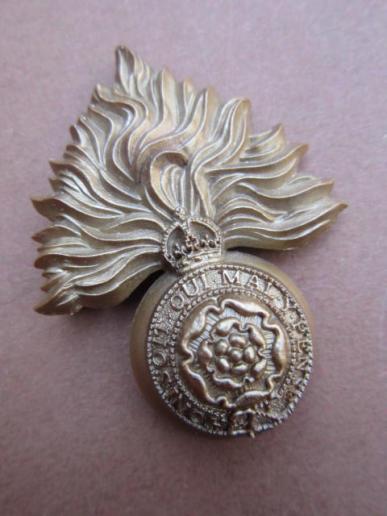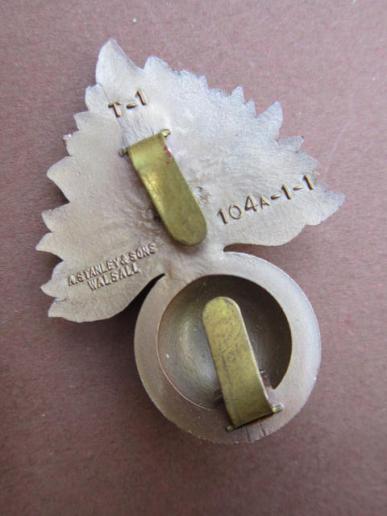A good example of a wartime made plastic i.e bakelite Royal Fusiliers Cap Badge
This ia a good example of a good example of a wartime made plastic i.e bakelite Royal Fusiliers Cap Badge. Second World War period plastic cap badge. Plastic cap badges, which were first introduced into the British Army during 1941 as a result of metal shortages caused by the prioritised demands of industrialised war production, proved very unpopular with British Army personnel. The ultimate predecessor Regiment was raised in 1685 by George Legge, Lord Dartmouth, from Tower of London Guards. They were originally intended to be escorts to artillery and so were armed with flintlocks (“fusils”) rather than matchlocks, which latter would have been a danger around the gunpowder associated with artillery. The unit was initially known as the Ordnance Regiment, shortly re-named the Royal Regiment of Fuziliers. In July 1881 the Regiment was re-designated City of London Regiment (Royal Fusiliers), later the same year becoming the Royal Fusiliers (City of London Regiment). At this time the centre of the grenade ball became a Tudor rose with a Victorian crown between the Garter and an elongated array of flames. In 1901thedesign of the flames reverted to a more triangular shape and the crown became a King’s crown. This example was made by the well known maker of plastic badge, the Walsall based firm of A.Stanley&Sons and is a a perfect un-issued condition. Hard to upgrade
Code: 51078


